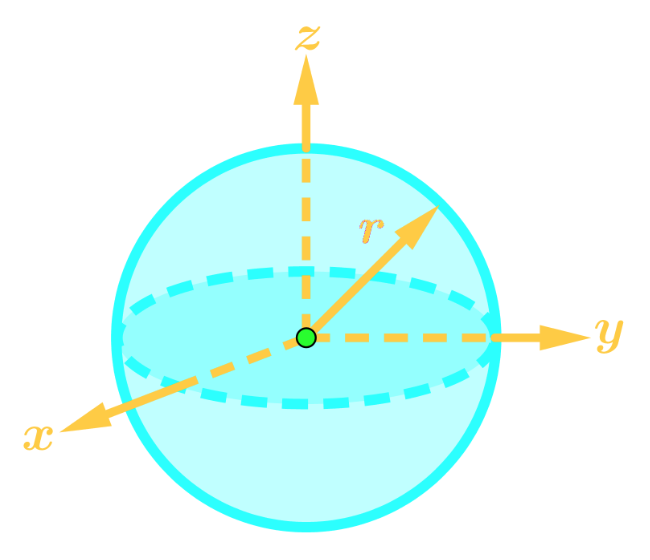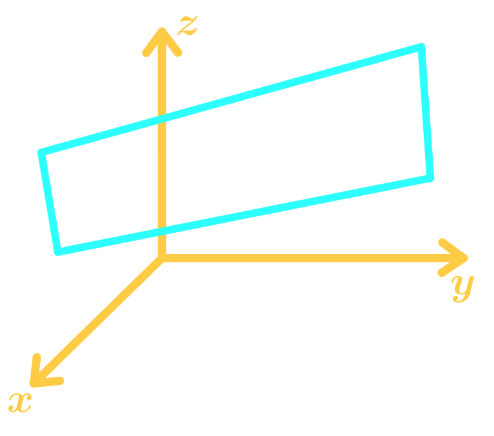3-D Coordinate System
In the 3-D Coordinate System, also denoted as , we have 3 axis . We draw the axis' in the graph like this:

Points are written in the form
Planes
The -plane corresponds to all the points at which .
The -plane corresponds to all the points at which .
The -plane corresponds to all the points at which .
These planes are sometimes called "coordinate planes".
Projection of a Point
When a point gets projected onto a plane, then the point will be on the plane.
For example, the projection of point onto the -plane will become .
Distance of Two Points
To find the distance between two points in , we use the formula:
Where the two points are and .
Other General Equations in 3D
Here are the general types of equations you might see in the 3-D Coordinate system:
- Cylinder:

Points are written in the form - Sphere:

Points are written in the form - Plane:







